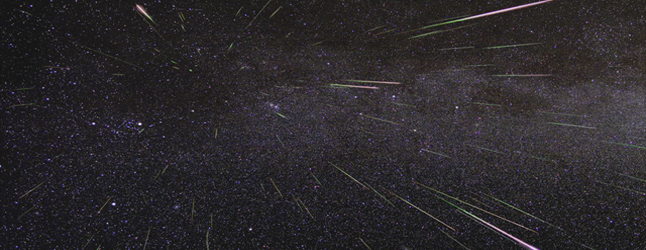

The annual Perseid Meteor Shower, usually the best meteor shower of the year, is returning to our night sky in early August and will reach their peak on Thursday night, August 12 and the early morning of Friday August 13. The Perseids, rise to a peak gradually over several weeks and then decrease in numbers rapidly after the peak.
Rick Reynolds from Mount Revelstoke National Park will keep the Mount Revelstoke road open on Friday night, August 13, and this year, we are going right to the summit! From there we will have a 360 degree view of the sky! Not only will we see meteors streaking across the sky but also the beautiful Milky Way, with all it’s treasures, will be spread out high across the sky, starting with Perseus in the NE and all the way to Scorpius in the SW. This is a great opportunity and on behalf of Rick and Parks Canada we welcome you all. There will be no charge to use the road.
Perhaps you’ve seen some Perseids already?
A meteor shower occurs when the Earth passes through the trail of debris strewn behind a comet as it orbits the Sun. The Perseid meteors are tiny grain-sized bits of icy, gravelly debris that were shed by Comet Swift-Tuttle in one of its 130-year orbits around the Sun. All comets release a dusty debris tail and every year at this time, Earth intersects Swift-Tuttle’s orbit and plows through its debris stream. The bits of ice and dust left behind by the comet will be striking our atmosphere at speeds of up to 60 km (40 mph) a second. The debris will vaporize due to friction with the air, and we’ll see each vaporizing bit as a bright streak in our night sky… meteors!
Although meteors can appear from anywhere in the sky, the point (radiant) in space from which these meteors appear to originate lies within the constellation Perseus, which at this time of year rises in the northeast.
But it doesn’t really matter where in the sky you watch; meteors can appear anywhere. Just watch where it’s darkest, usually straight up. And realistically, don’t expect a literal shower. A meteor every few minutes is good!
Visually, meteors look like a star streaking across the sky, so they are commonly called shooting stars or falling stars. If a meteor is large enough, part of it may survive and strike the Earth, in which case it is called a meteorite. If you are really lucky, you will witness a fireball, a very bright meteor with a small disk that often casts shadows as it slices across the heavens. Some fireballs explode into several flaming fragments and then it is called a bolide.
Decent numbers of Perseids can be seen beginning around 10 pm but the best show picks up after midnight and continues until dawn. Meteor showers are best after midnight because the spinning Earth has turned you directly into the oncoming meteor stream. Fortunately, the waxing young Moon will be out of the night sky on Thursday/Friday nights and will not interfere with the viewing.
To enjoy the Perseids, find a dark site away from glaring lights with an open view of as much sky as possible. Get comfy and give your eyes 10 minutes to adjust to the dark. Soon you’ll see shooting stars racing along the Milky Way. It’s great fun to give meteor-watching a try! It’s a chance to enjoy the night air and see some celestial wonders. The warmth of northern summer makes the Perseid Meteor shower one of the year’s most inviting sky shows. Meteors are best seen with the naked eye so binoculars and telescopes are not necessary.
Clear Skies!
Larry Pawlitsky is a local amateur astronomer



